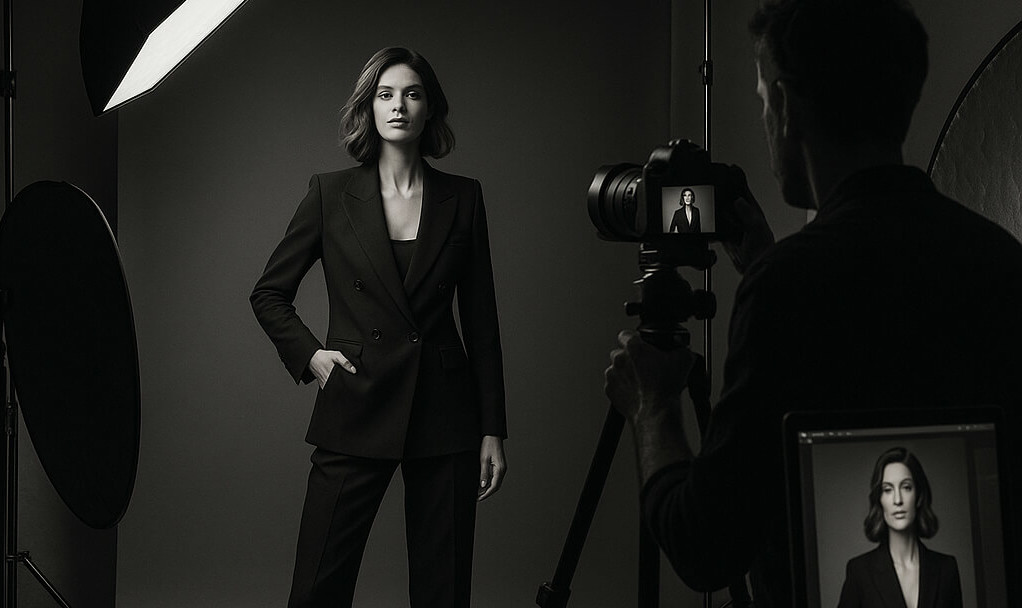June 10, 2025

Fashion photography is a dynamic and creative genre that requires a blend of artistic vision, technical skills, and an understanding of visual storytelling. Whether you're shooting for magazines, brand campaigns, or personal projects, mastering the essentials of fashion photography is key to creating impactful, stylish images.
Fashion photography revolves around presenting clothing, accessories, and overall style in visually compelling ways. The genre can range from high-fashion editorial spreads to laid-back lifestyle shots. At its core, fashion photography is not just about showing off clothes—it’s about creating a mood, setting a tone, and telling a story.
While high-fashion editorials focus on artistic expression and avant-garde visuals, lifestyle fashion photography leans toward natural, accessible images that convey a sense of real life while still emphasizing style. It’s about blending the product with human emotion, personality, and culture.
Explore more: What Is Artistic Photography?
To create professional-quality fashion photos, you'll need the right gear. Here’s what to consider:
Camera
Lenses
For more on portrait lenses, check out Best Lenses for Portrait Photography.
Tripod
Reflectors & Light Modifiers
Remote Triggers & Tethering Tools
Lighting is arguably the most critical factor in fashion photography. The right lighting setup not only shapes the look of the shoot but also sets the tone and mood. Here’s how to make the most of your lighting:
Natural Lighting
Learn how to use natural light in your shoots with How to Use Natural Light for Stunning Photos.
Studio Lighting
For a deeper dive into studio lighting, read Photography Artificial Lighting – A Beginner's Guide to Studio and Creative Lighting.
Creative Lighting Techniques
Also explore: Best Lighting Setup for Portrait Photography.
The way you direct your model and compose the shot makes all the difference in fashion photography. Here’s how to take your posing and composition to the next level:
Posing
Composition Techniques
Fashion photography is a collaborative effort. Ensure you have the right team to bring your vision to life:
Wardrobe Stylists
Hair & Makeup Artists
Creative Directors
Post-processing helps elevate your fashion images, enhancing the story you’ve told through the camera lens:
Color Correction
Adjust the image to make sure the colors appear accurate. This is particularly important for skin tones, clothing, and accessories.
Learn more about color adjustments with Color Correction vs. Color Grading in Photography.
Color Grading
Add mood or atmosphere by adjusting hues. Fashion photography often uses cinematic tones, like teal and orange, to create a high-end look.
Learn about Color Grading in Photography.
Retouching
Retouching is a crucial step, especially for fashion shoots. Smooth skin, remove blemishes, and adjust textures to give the photo a polished, professional finish.
Check out Best Photo Editing Apps 2025.
As you hone your skills, consider developing your photography business and brand:
Fashion photography is a constantly evolving field. To stay ahead, keep learning:
For tips on improving your skills, check out Common Mistakes in Photography and How to Avoid Them.
Fashion photography requires a combination of technical expertise, creative vision, and collaboration. With the right tools, a solid team, and an eye for detail, you can create striking images that tell compelling stories. Whether you're aiming for high-fashion editorials or lifestyle campaigns, the key to success is practice, perseverance, and an understanding of both the art and business sides of photography.
Stay up to date with the newest tips, gear reviews, and step-by-step guides to elevate your photography journey from home and beyond.